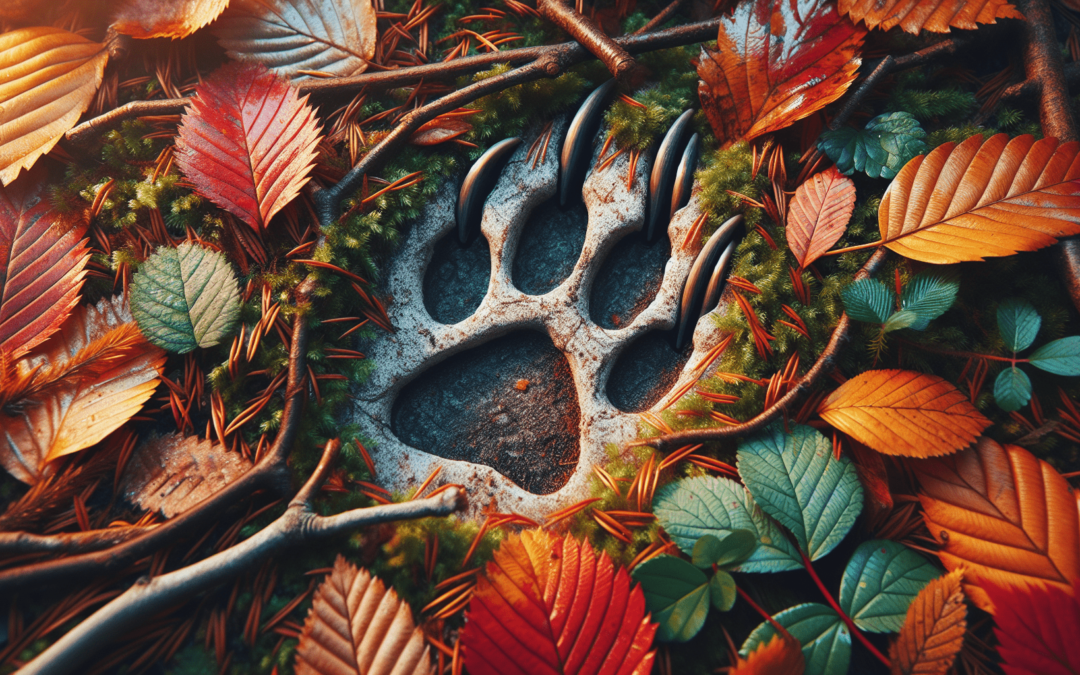Welcome to “How To Track Animals For Hunting And Safety,” your go-to guide for understanding the essentials of animal tracking. In this article, you’ll discover valuable tips and techniques that will enhance your tracking skills, whether you’re hunting or ensuring your safety in the wilderness. From identifying tracks and signs to understanding animal behavior, you’re about to embark on a journey that equips you with the knowledge needed to navigate the great outdoors with confidence and respect for nature. Let’s dive in and empower your adventures! Have you ever wondered how to effectively track animals for both hunting and safety purposes? Whether you’re an experienced hunter or a wilderness enthusiast, mastering the art of tracking animals can greatly enhance your outdoor experience. In this guide, you’ll learn everything you need to know to get started on the right foot.

Understanding Animal Behavior
Why Animal Behavior Matters
Understanding animal behavior is crucial because it not only helps you track animals more effectively, but also keeps you safe. Knowledge of behavior patterns will make it easier to predict where animals might be, and what they might do next.
Key Behavioral Patterns
Different animals have different behavioral patterns that you can look for:
| Animal | Behavioral Pattern |
|---|---|
| Deer | Typically graze at dawn and dusk. Will spook easily. |
| Bears | Active mostly at dawn and dusk. Usually foraging for food. |
| Wolves | Travel in packs and communicate via howling. |
| Birds | Each bird species has its own unique behavior, including nesting and feeding patterns. |
Tools You’ll Need
Basic Gear
When it comes to tracking, having the right gear can make all the difference. Here are the basics you’ll need:
- Binoculars – Helps you see animals from a distance.
- GPS device or reliable map – Essential for not getting lost.
- Notebook and pen – For recording observations and patterns.
- Proper clothing – Camouflage and weather-appropriate attire.
Advanced Tools
For those who want to take tracking to the next level, consider investing in:
- Trail Cameras – To monitor animal activity in specific areas.
- Rangefinder – Useful for determining distances.
- Smartphone Apps – Apps like HuntStand or OnX Hunt can provide valuable insights and mapping functions.
Reading Animal Tracks
Identifying Different Tracks
One of the most fundamental aspects of tracking is learning to identify different animal tracks. Each species leaves behind unique prints that you can learn to recognize.
| Animal | Track Characteristics |
|---|---|
| Deer | Hoof prints, heart-shaped, split in the middle |
| Bear | Large prints with five toes and claw marks |
| Wolf/Dog | Four toes with claw marks, resemble a large dog |
| Bird | Three forward toes and one backward |
Measuring Tracks
Once you’ve identified a track, measuring it can give you more information.
- Length and Width: Use a ruler or measuring tape.
- Stride Length: Measure the distance between subsequent prints.
- Depth: Deeper prints might indicate a heavier animal.
Following Animal Trails
Interpreting Signs Along the Trail
A trail can offer more than just footprints. Look for:
- Broken Branches: Indicates animal passage.
- Scat: Different animals produce different kinds of droppings.
- Scratches: On trees or logs, particularly common with bears.
- Feeding Sites: Locations with disturbed vegetation or remains of prey.
Estimating Age of Trails
Understanding how old a trail is can help you gauge how close the animal might be.
| Trail Sign | Age Indicator |
|---|---|
| Fresh Tracks | Crisp edges, moist soil |
| Dry or Faded Tracks | Several hours to a day old |
| Fresh Scat | Moist and intact |
| Dry Scat | Older, possibly a day or more |

Safety Tips While Tracking
Knowing What to Avoid
Certain precautions can help you stay safe:
- Venomous Snakes: Be cautious around high grass and dense underbrush.
- Predatory Animals: Always stay aware of your surroundings.
- Dangerous Terrain: Loose rocks, muddy slopes, and thick woods can be hazardous.
Essential Safety Gear
Safety is paramount, and having the right gear can ensure you return home safely.
- First Aid Kit: Must-have for treating injuries.
- Bear Spray: Crucial if you’re in bear country.
- Emergency Whistle: Useful for signaling for help.
- Extra Food and Water: In case you get lost or delayed.
Ethical Considerations
Hunting Regulations
Always be aware of local hunting laws and regulations. These rules are in place to ensure sustainable wildlife populations and your safety.
Respecting Wildlife
Tracking should never be about disturbing wildlife. Respecting animals’ space and well-being is crucial for both ethical and practical reasons. Observing animals from a distance can provide valuable learning without causing harm.
Practical Exercises and Drills
Practice Identifying Tracks
A great way to hone your skills is through regular practice. Consider visiting nature reserves or parks where wildlife is abundant.
Mock Tracking Scenarios
Engage in simulated tracking activities. This can help you sharpen your skills:
- Scout a Known Trail: Start with a path where animal activity is guaranteed.
- Record Observations: Take detailed notes on what you see.
- Analyze Patterns: Try to predict animal movement based on your observations.
Engaging with Local Experts
Local wildlife experts and hunters can offer invaluable insights. Consider joining a local wildlife tracking group. Networking with like-minded people can greatly enrich your learning experience.
Conclusion
There you have it—comprehensive guidelines on how to track animals for hunting and safety. The skills you gain will not only enhance your outdoor adventures but also deepen your understanding and respect for the animal kingdom. By observing animal behaviors, using the right tools, and taking necessary safety precautions, you’ll be well-prepared for successful tracking.
Happy tracking, and stay safe out there!

